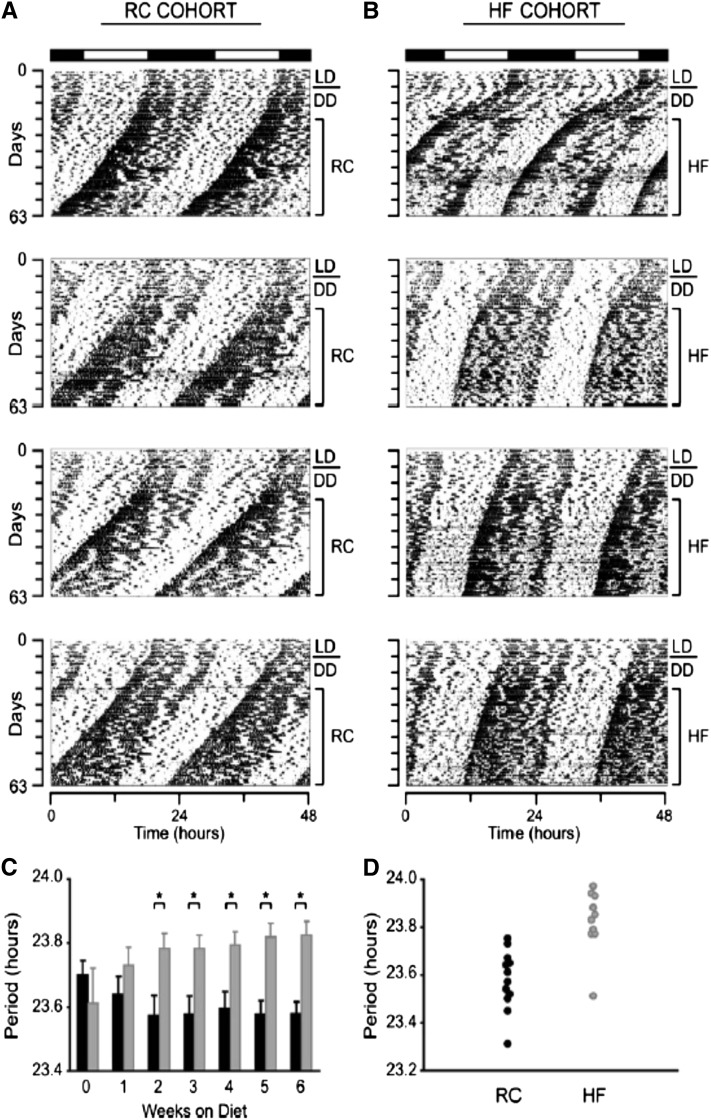FIGURE 1.
A high-fat (HF) diet lengthens the circadian period in mice. Young adult, male, wild-type C57BL/6J mice were fed unpurified diet [regular chow (RC)] (A) or an HF diet (B) and released from entrained light:dark (LD) conditions to constant darkness (DD). Four representative activity records of individual mice are shown for each experimental group. (C) Comparison of free-running period (i.e., the length of time between the onset of activity of successive activity bouts) over time between mice fed RC (black bars; n = 12) and an HF diet (gray bars; n = 10). Week 0 represents the LD condition when all mice were fed RC. Week 1 is the first week being fed the respective experimental diet. (D) Distribution of free-running periods in mice fed RC or an HF after 6 wk being fed the diet. Values in panel C are means + SEMs. *P < 0.05. Reproduced from reference 23 with permission.

